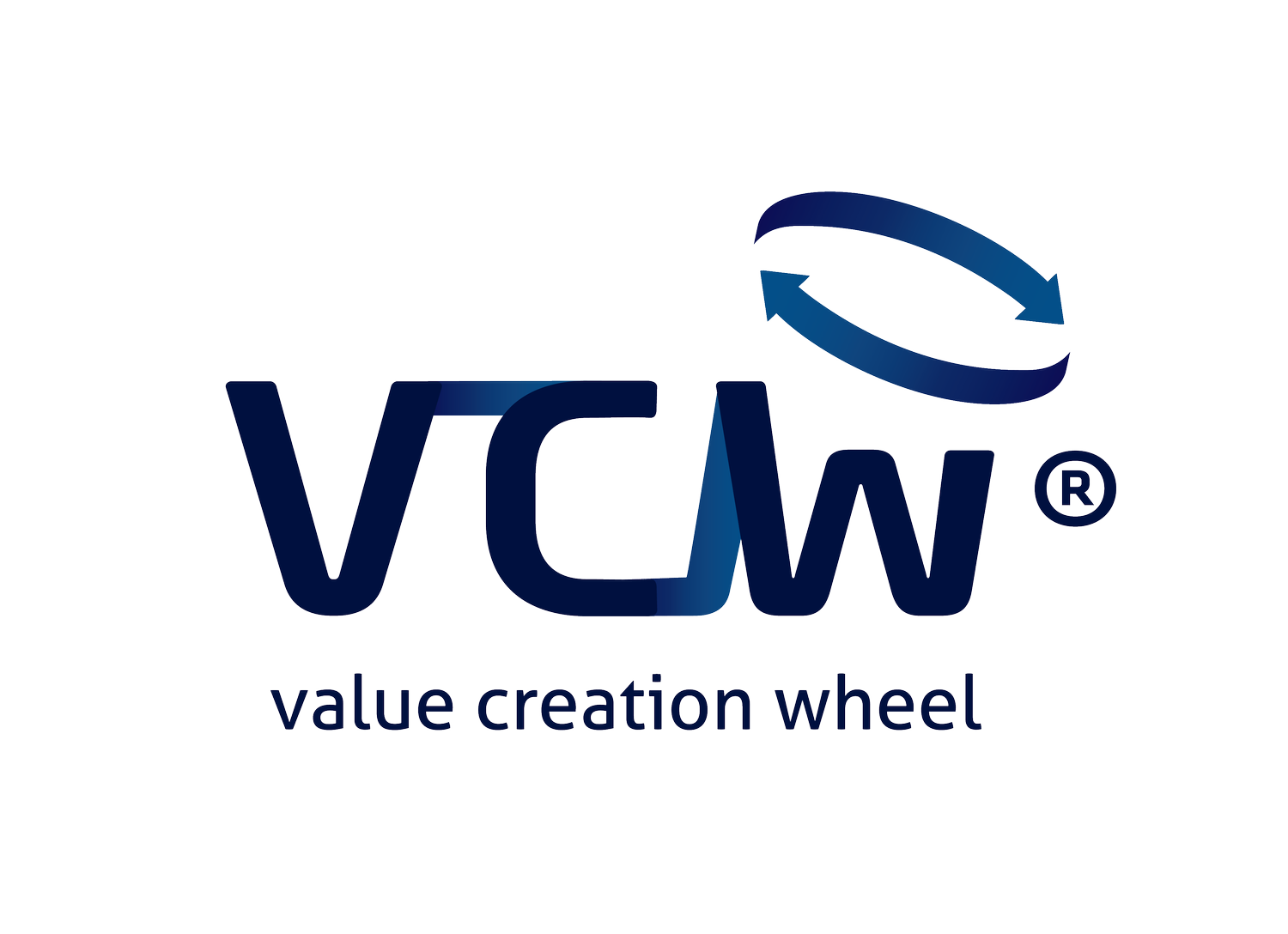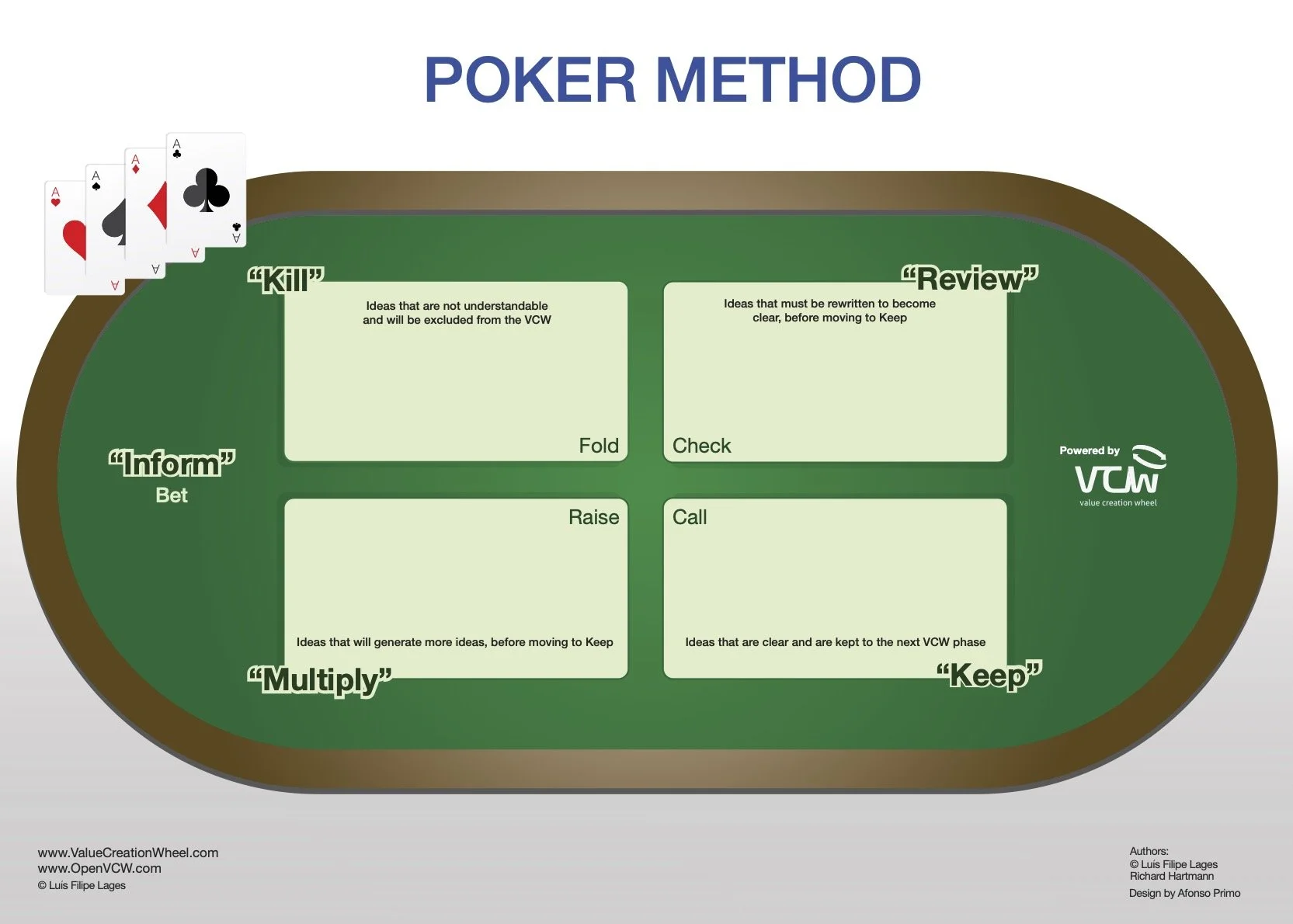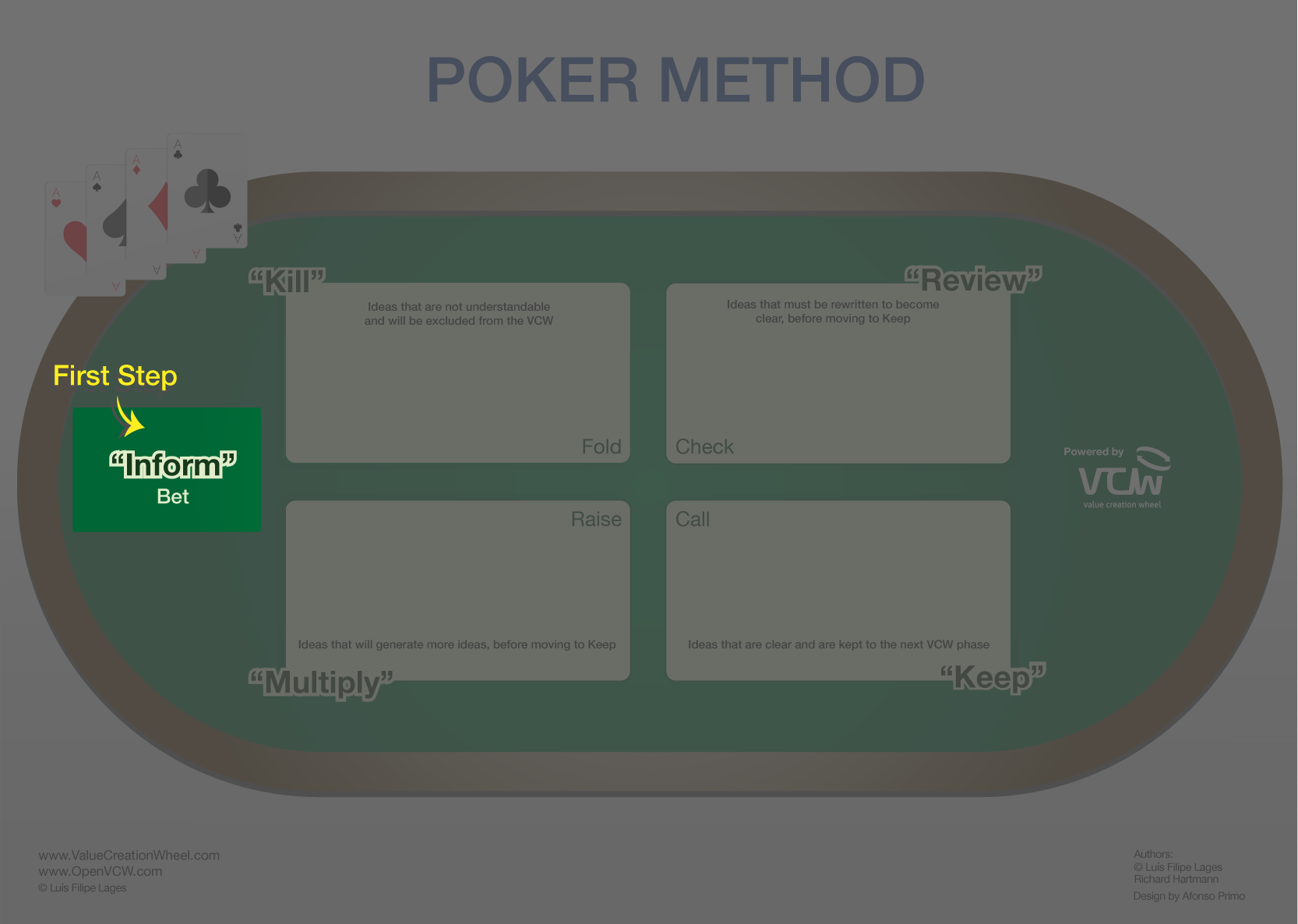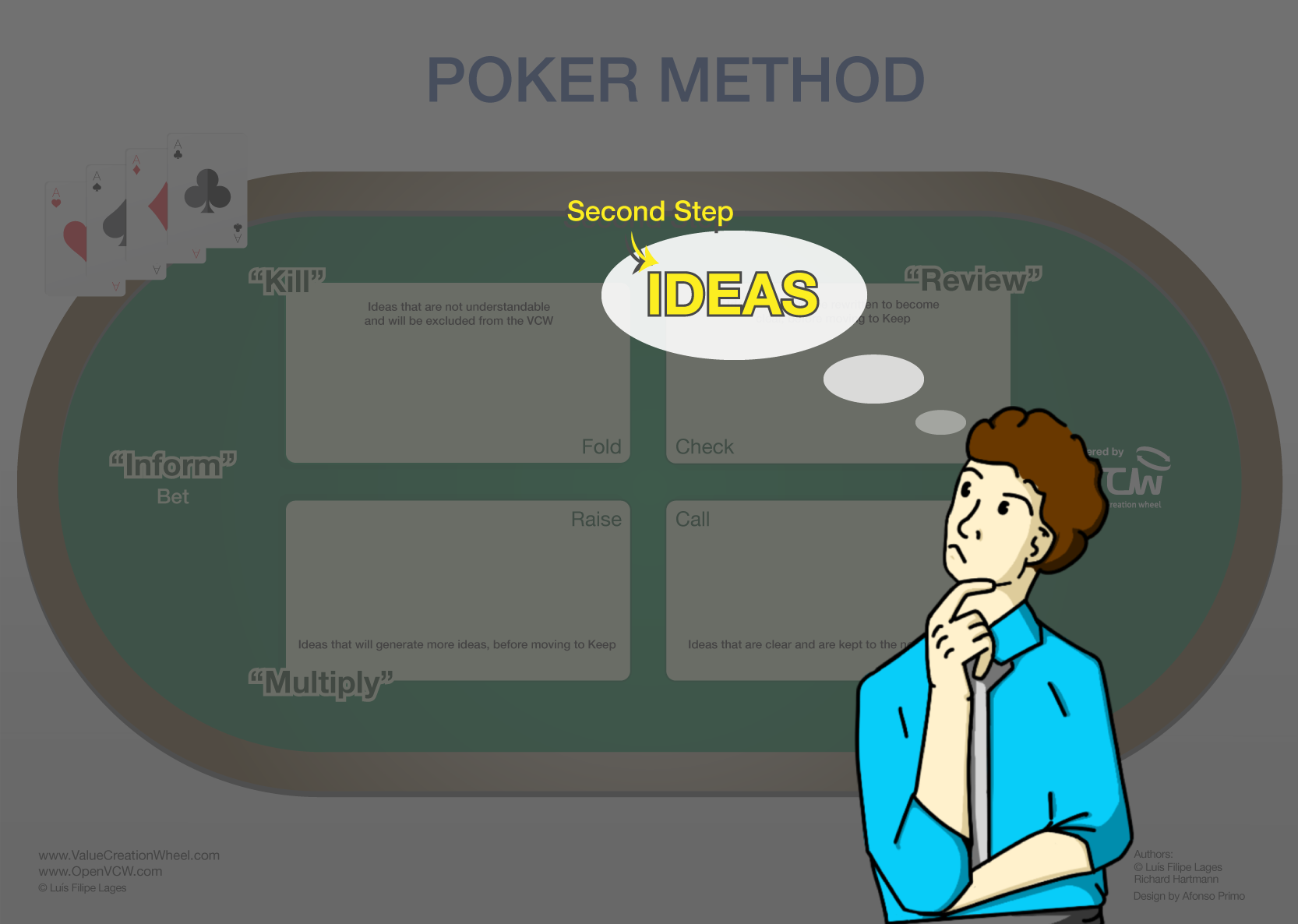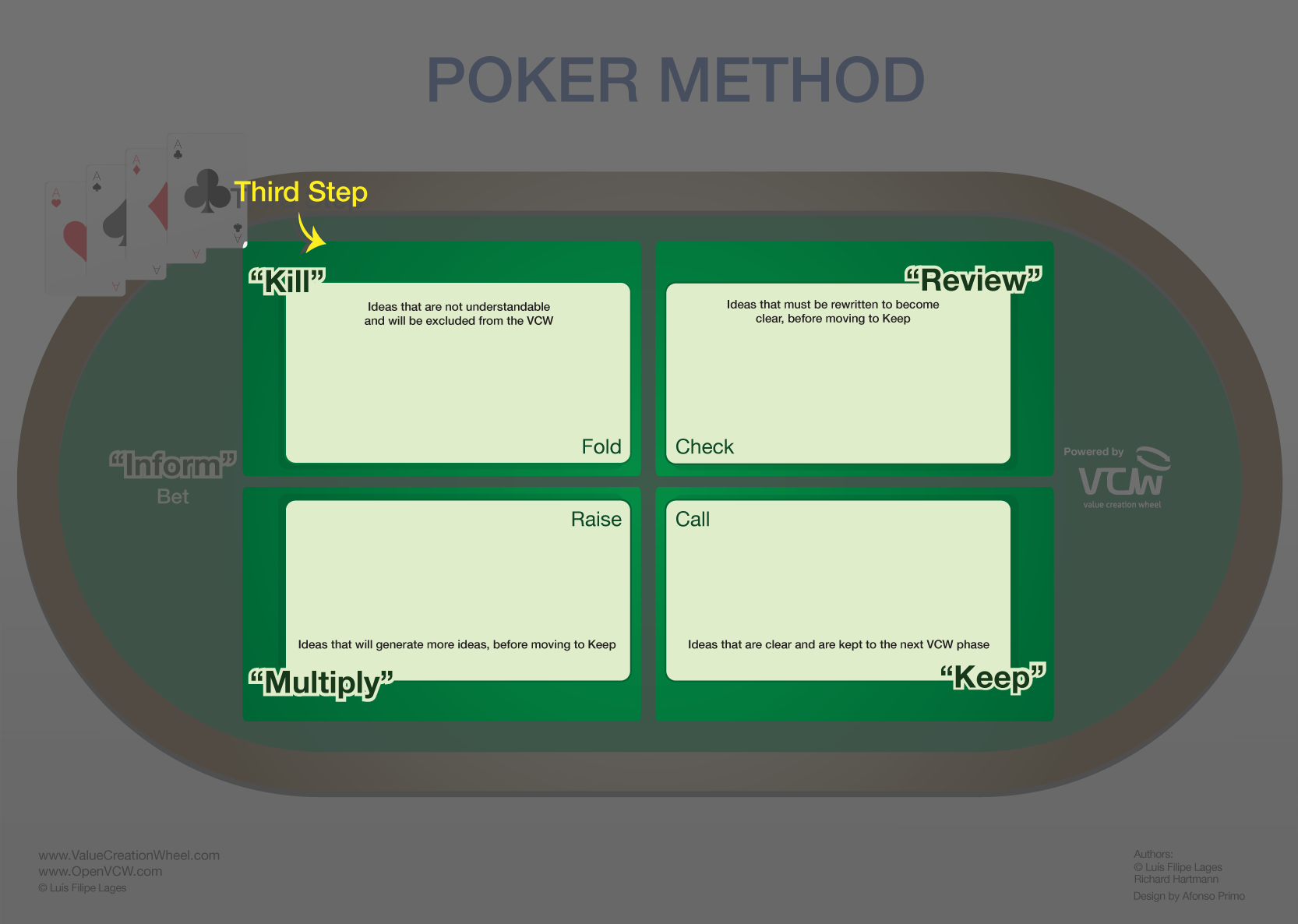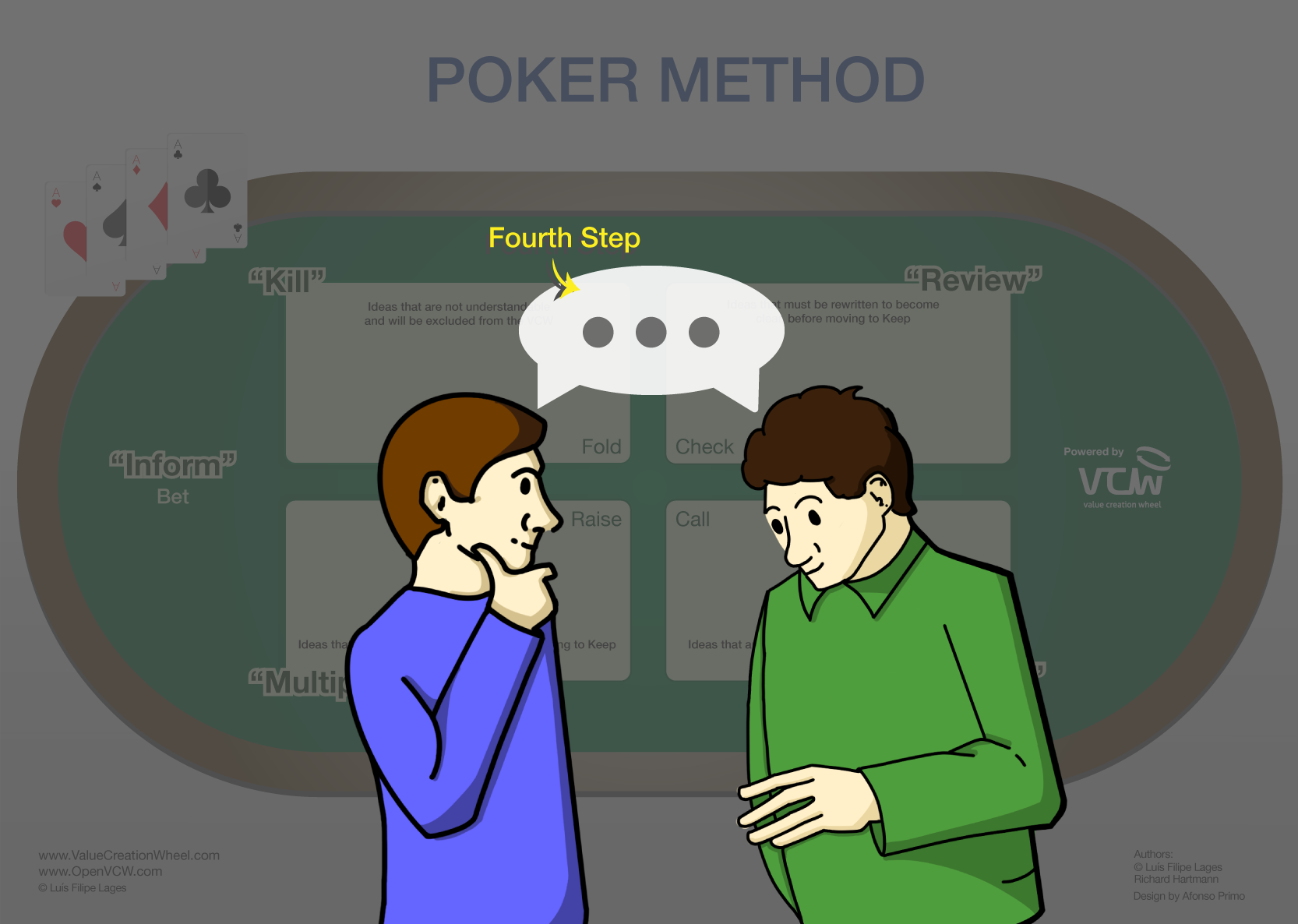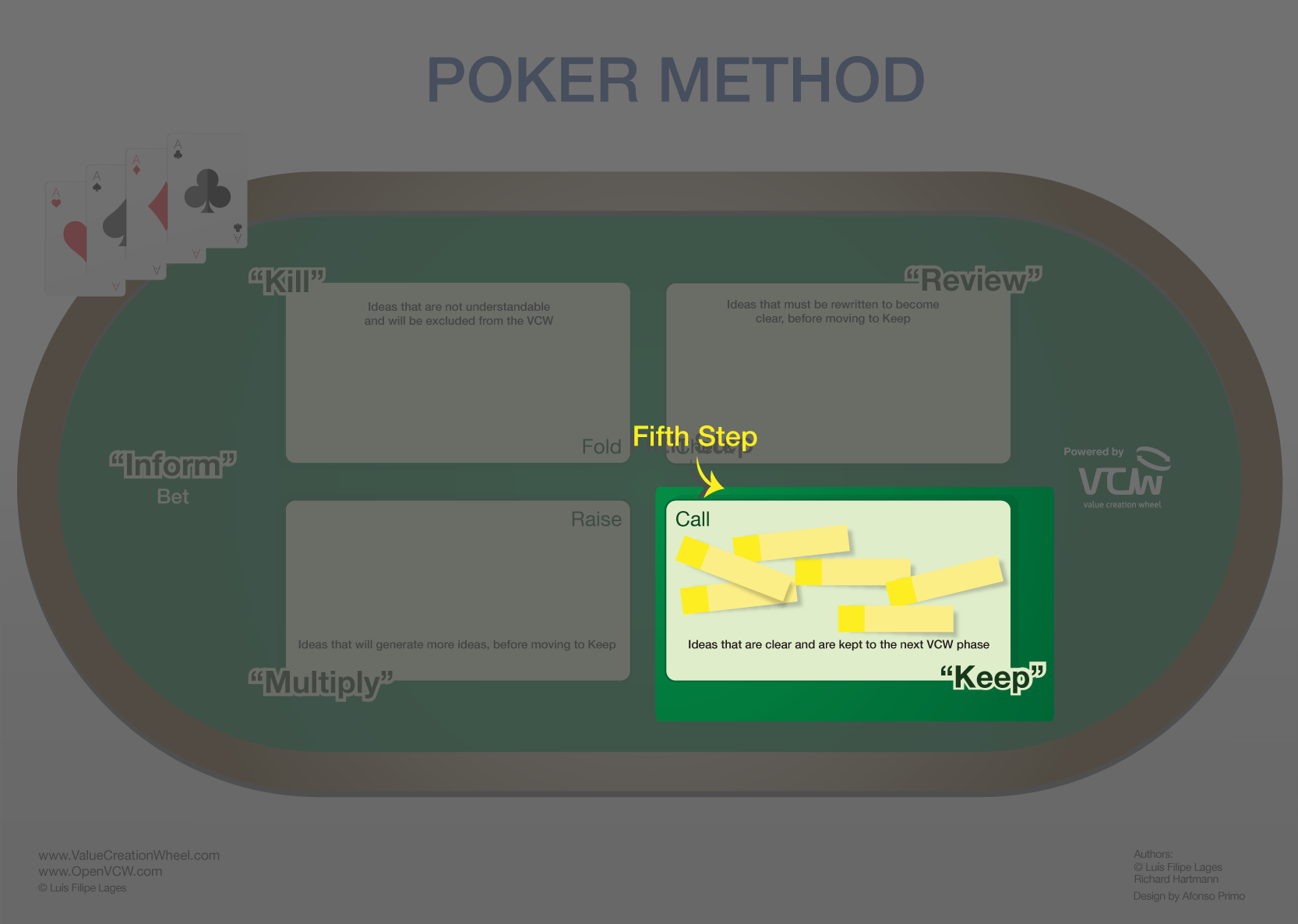
VCW Poker Method
The Poker Method is a structured feedback tool integrated into the Value Creation Wheel (VCW) framework, developed by Luís Filipe Lages and Richard Hartmann. This method streamlines feedback processes, particularly in group settings. By categorizing feedback into four distinct options—Keep, Multiply, Review, or Kill—the Poker Method ensures consistent and efficient analysis of every idea or filter. It simplifies group feedback by providing a clear and effective way to clarify concepts, making it an essential component for validating and refining ideas and filters within VCW projects.
Download the VCW Poker Method to be filled by your co-creation team hereWhat is the Poker Method?
The VCW Poker Method, developed by Luis Filipe Lages and Richard Hartmann, is a structured and collaborative tool within the Value Creation Wheel (VCW) framework that facilitates organized feedback to refine ideas and filters. It ensures that only the most relevant elements advance to subsequent phases while preserving others for future consideration.
How it works:
1. Application to ideas:
Ideas are categorized into four actions:
"Keep" (Maintain): Ideas that are relevant and should be retained as they are.
"Kill" (Eliminate): Ideas that are not suitable and should be discarded.
"Multiply" (Enhance): Ideas with potential that should be expanded or developed further.
"Review" (Reassess): Ideas that need further analysis or adjustments.
Only ideas categorized as "Keep" move to the next phases. Those not classified as "Keep" are saved for future analyses, as they may be useful in a different context or with other key decision makers, teams, or individuals.
2. Application to criteria/filters:
The same process is applied to criteria or filters.
Only filters categorized as "Keep" advance, while others are saved for potential future applications.
Benefits:
Organization: Establishes a structured and transparent decision-making process.
Collaboration: Encourages stakeholder involvement and co-creation.
Prioritization: Focuses on refining and implementing the most impactful ideas and filters.
Future Relevance: Ensures that no ideas or filters are permanently discarded, recognizing their potential value in other contexts.
This comprehensive approach ensures that all ideas and filters are evaluated fairly, with an emphasis on adaptability and long-term value creation.
The Poker Method powered by VCW facilitates organized feedback, enhances future decision-making, and promotes collaboration within organizations.
Effective Feedback Management
The Poker Method offers a structured approach for collecting and processing feedback, categorizing ideas and filters into "Keep", "Kill", "Multiply", or "Review". This system ensures unbiased and systematic consideration of feedback, enhancing clarity and transparency in groups.
Idea or Filter Refinement
It aids in refining ideas and filters by using categories, allowing quick assessment of each idea's clarity. This helps focus on clear ideas or filters, improving the quality of future decision-making.
Enhanced Collaboration
The Poker Method fosters collaboration by providing a common analysis framework, encouraging open communication and diverse viewpoints, essential for innovative solutions crucial in multi-stakeholder environments.
Simplicity and Clarity
Its simplicity, with straightforward categories, makes the categorization process accessible and easy to understand, reducing confusion and ensuring clear communication among participants.
Adaptability
Versatile and adaptable, the Poker Method suits various contexts and industries, providing a structured approach for continuous idea and filter generation across different scenarios.
1.
Inform:
Clearly communicate each solution or filter to the group. This step ensures that all participants understand the context and specifics of what is being assessed.
2.
Individual Assessment:
KDMs or participants independently assess each idea or filter, considering it based on the provided information.
3.
Categorization:
- Keep: The idea or filter is suitable and well-articulated, requiring no changes.
- Kill: The idea or filter is not understandable and should be discarded.
- Multiply: The idea or filter has significant potential and should be expanded to generate multiple ideas/filters.
- Review: The idea or filter has potential but requires modifications or clarification.
4.
Feedback Sharing and Voting:
Participants share their decisions. For ideas and filters the "Kill" option is made available initially to streamline the decision process. If all participants vote "Kill," the idea is left behind. A single "Review" or "Multiply" vote would result in the idea or filter being kept with conditions for modifications. Only the ideas or filters that stay in "Keep" will pass to the next phase of the VCW.
5.
Discussion and Final Decision:
The group discusses the feedback, resolves any differences, and finalizes the categorization for each idea or filter. This stage often involves a consensus-building process to ensure alignment among the team and KDMs. The ideas that are not in "Keep" will not pass to the next phase of the VCW. However, they should not be discarded as they might be useful for future projects.
6.
Documentation and Next Steps:
The final decisions are documented, and any necessary actions or modifications are outlined. This ensures clarity and assigns responsibilities for the next steps in the VCW process.
